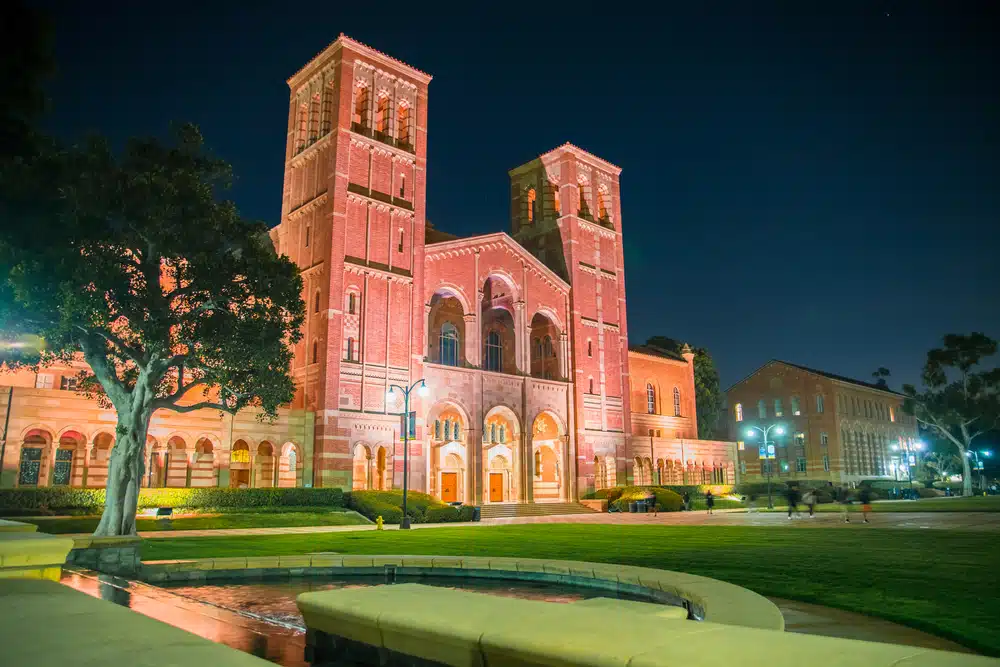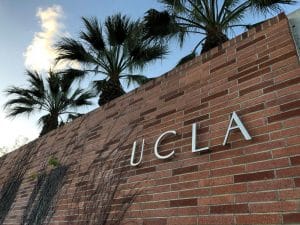UCLA Endowment
Endowments are an integral part of any higher learning institution. They offer financial stability, supplement tuition income, contribute to research funding, and ensure the institution’s long-term viability. This article looks at the endowment of one such institution – The University of California, Los Angeles (UCLA).
Understanding the Concept of University Endowments
Before delving into the specifics of UCLA’s endowment, it’s crucial to understand what an endowment is and why they’re so pivotal to universities. A university endowment is a collection of funds or assets an institution invests in; the returns from these investments are often used to support its operations.
Endowments are not just a financial tool; they represent the commitment and dedication of a university to its long-term success. They testify to the institution’s ability to secure resources and ensure its sustainability for future generations.
The Role of Endowments in Higher Education
Endowments play a critical role in higher education institutions. Notably, they provide a reliable and continuous source of income to the university. This helps reduce reliance on fluctuating funding sources such as government subsidies and tuition revenue, ensuring the university’s long-term stability and financial health.
Moreover, endowments act as a catalyst for growth and innovation within universities. They empower institutions to pursue ambitious goals and initiatives that may not be feasible through traditional funding channels. By providing a steady income stream, endowments enable universities to invest in cutting-edge research, attract top-tier faculty, and offer scholarships to deserving students.
Additionally, endowments foster a sense of pride and ownership within the university community. Donors who contribute to an endowment often develop a deep connection with the institution, knowing that their support will have a lasting impact on future generations of students and researchers.
How Endowments Support Universities
With fluctuating economic climates and the rising costs of maintaining a world-class curriculum, universities face an ongoing challenge: balancing their budget while maintaining their standing. This is where an endowment plays a significant role.
Endowments provide a financial buffer, allowing universities to plan for the future more accurately. They serve as a safety net during economic downturns, ensuring essential programs and initiatives can continue without disruption. Universities can mitigate financial risks and navigate challenging times by diversifying their investment portfolios.
Furthermore, endowments enable universities to take on innovative research opportunities and initiatives that may not have consistent funding sources. They provide the necessary resources for groundbreaking discoveries, technological advancements, and interdisciplinary collaborations. In this way, endowments contribute to the intellectual and scientific progress of society as a whole.
Moreover, endowments have a profound impact on the student experience. They support scholarships and financial aid programs, making education accessible to a diverse range of talented individuals. By reducing the financial burden on students, endowments create a more inclusive and equitable learning environment.
Endowments also enhance campus life by funding extracurricular activities, cultural events, and community outreach programs. They create opportunities for students to engage in leadership development, service-learning, and personal growth beyond the classroom.
The History of UCLA’s Endowment
The UCLA endowment’s history is as rich and dynamic as the institution’s. Over the years, it has evolved to support the university’s changing needs and ambitions.
But let’s dive deeper into the fascinating story of UCLA’s endowment and explore its origins, growth, and significant milestones.
The Origins and Growth of UCLA’s Endowment
The UCLA endowment was established in 1951 with an initial amount of just $1 million. This humble beginning laid the foundation for what would become a vital source of support for the university.
Over the years, thanks to the generosity of donors, intelligent investment strategies, and careful management, the endowment has grown substantially. What started as a modest sum has become a significant financial resource for UCLA.
The endowment’s growth has mirrored the institution’s growth, aiding UCLA’s rise to a leading public university worldwide. The funds have been instrumental in initiatives ranging from groundbreaking research to enhanced student life amenities.
The endowment has been carefully cultivated through the decades, with contributions from alums, corporations, foundations, and other supporters. These contributions have increased the endowment’s size and diversified its investment portfolio, ensuring long-term financial stability.
Significant Milestones in UCLA’s Endowment History
Over the years, UCLA’s endowment has seen multiple milestones, each marking a significant achievement in its growth and impact.
One such milestone was in 2016 when UCLA’s endowment crossed the $4 billion mark for the first time. This remarkable achievement was a testament to its donor community’s sound financial management and philanthropic spirit.
With this milestone, UCLA’s endowment became one of the largest among public universities in the United States. The increased financial resources allowed the university to further invest in its academic programs, research endeavors, and student support services.
Another notable milestone in the history of UCLA’s endowment was the establishment of endowed chairs and professorships. These prestigious positions, funded by the endowment, attract world-class faculty members who bring their expertise and passion to UCLA, enriching the academic experience for students and advancing knowledge in various fields.
Furthermore, the endowment has played a crucial role in supporting scholarships and financial aid programs, ensuring that talented students from all backgrounds can access a UCLA education. This commitment to accessibility and inclusivity has been a cornerstone of UCLA’s mission.
The Structure of UCLA’s Endowment
UCLA’s endowment structure is tailored to ensure efficient funds management and preservation of the capital base for future generations.
UCLA’s endowment is vital to the university’s financial stability and long-term success. It serves as a reliable source of funding for various initiatives, allowing UCLA to maintain its position as a world-class institution of higher education.
The Management of UCLA’s Endowment
The UC Board of Regents, a governing body overseeing the University of California system, is crucial in managing UCLA’s endowment. Working in conjunction with The UCLA Foundation, a separate nonprofit organization, the UC Board sets investment policies and strategies to ensure the growth and sustainability of the endowment.
The UCLA Foundation acts as a bridge between the university and its generous donors. It helps channel gifts from individuals, corporations, and foundations into the endowment, ensuring that these contributions support UCLA’s mission and vision.
The Office of the Chief Investment Officer (OCIO) manages the endowment’s investments within the UC Board of Regents. The OCIO employs a diversified investment approach, carefully selecting a mix of assets to manage risks and optimize returns. This strategic approach allows UCLA’s endowment to weather market fluctuations and generate sustainable income over the long term.
The Distribution of Funds within UCLA’s Endowment
UCLA’s endowment is not a single fund but a collection of individual funds, each with its specific purpose and objective. These funds are strategically assigned to support various areas within the university, including scholarships, faculty chairs, research initiatives, and other specific university programs.
By allocating funds to specific areas, UCLA ensures that its endowment has a direct and meaningful impact on the university community. Scholarships funded through the endowment provide opportunities for talented students who may not have the financial means to pursue higher education. Faculty chairs supported by the endowment attract renowned scholars and experts, enhancing the quality of teaching and research at UCLA.
Revenues generated from the endowment are distributed annually, following a carefully designed framework. This distribution strategy ensures that the investment continues to bear fruit for generations, supporting the university’s long-term objectives without depleting the principal sum. By maintaining a sustainable distribution model, UCLA can consistently rely on the endowment to support its programs and initiatives, even during economic uncertainty.
The Impact of UCLA’s Endowment
The impact of UCLA’s endowment extends across all facets of university life. From academics to research and beyond, it plays a crucial role in shaping the university’s future.
UCLA’s endowment is a testament to the generosity and vision of its supporters. It is a financial resource that provides stability and long-term sustainability for the university. With a substantial endowment, UCLA can weather economic fluctuations and continue offering its students a world-class education.
The Influence of the Endowment on UCLA’s Academics
The endowment plays a significant role in supporting UCLA’s academic excellence. It funds professorships, scholarships, and innovative educational programs, enhancing the university’s learning environment and enabling UCLA to attract and retain top-tier faculty and students.
For example, endowed chairs—funded by the endowment—are prestigious appointments that help UCLA keep the best and brightest minds in academia. These chairs provide faculty members with the resources and support they need to conduct groundbreaking research and mentor the next generation of scholars.
Similarly, endowment-funded scholarships make a UCLA education accessible to talented students from all walks of life. These scholarships alleviate the financial burden for students and create a diverse and inclusive campus community where students from different backgrounds can come together to learn and grow.
Moreover, the endowment supports innovative academic programs that push the boundaries of traditional disciplines. These programs encourage interdisciplinary collaboration and foster a spirit of intellectual curiosity among students and faculty. Through the endowment, UCLA can pioneer new fields of study and address pressing societal challenges.
The Endowment’s Role in UCLA’s Research and Development
Beyond academics, the endowment also fuels UCLA’s vibrant research ecosystem. It aids in funding seeds for new ideas, purchasing equipment, attracting research talent, and supporting interdisciplinary research initiatives.
By investing in research and development, UCLA’s endowment drives innovation and discovery, further cementing UCLA’s premier position among research universities around the globe. It allows faculty members and students to pursue groundbreaking research that has the potential to transform industries, improve lives, and shape the future.
Additionally, the endowment enables UCLA to attract top research talent worldwide. With competitive research grants and state-of-the-art facilities, UCLA becomes a magnet for brilliant minds seeking to make a meaningful impact in their fields.
Furthermore, the endowment supports interdisciplinary research initiatives that bring together experts from various disciplines to tackle complex problems. These initiatives foster collaboration and cross-pollination of ideas, leading to innovative solutions that address societal challenges from multiple perspectives.
The Future of UCLA’s Endowment
As we look forward, UCLA’s endowment is poised to play an even more critical role in shaping the university’s future.
Predicted Trends for UCLA’s Endowment
With its history of strategic growth and robust investment practices, UCLA’s endowment is anticipated to continue its upward trajectory. Several factors will potentially influence this, including the ongoing generosity of donors, positive long-term investment returns, and effective allocation strategies.
As knowledge continues its explosive growth, endowments will likely channel more funds into research and academic innovation, underpinning UCLA’s commitment to remaining at the educational forefront.
The Long-Term Sustainability of UCLA’s Endowment
One core tenets of managing an endowment is maintaining intergenerational equity—ensuring that the resources serve not just today’s university community but future generations. The continuing success and long-term sustainability of UCLA’s endowment rely on balanced spending practices, investment risk management, and the continuity of strong donor support.
Ready to Navigate the Complex World of College Admissions? Let AdmissionSight Guide You!
You’ve just delved deep into the intricacies of UCLA’s endowment, gaining a nuanced understanding of how universities like UCLA manage their financial resources. Impressive, right? But here’s the thing: the college admissions process is just as complex, if not more so.
Why leave your future to chance?
At AdmissionSight, we specialize in demystifying the college admissions process, just like we’ve unraveled the complexities of university endowments. Our expertise ranges from crafting compelling personal statements to strategizing extracurricular activities and preparing for interviews.
What We Offer:
- Personalized College Admission Strategies: Tailored to fit your unique strengths and aspirations.
- Financial Aid and Scholarship Guidance: Quality education shouldn’t break the bank.
- Application Review Services: Ensuring every essay, recommendation letter, and form is perfect.
Why Choose Us?
- Proven Track Record: Our clients have been admitted to top-tier universities, including UCLA.
- Expertise: Our team is well-versed in the nuances of college admissions, ensuring you have the best shot at your dream school.
- Inclusivity: We believe in equal opportunities for all; our services are designed to be accessible and beneficial to everyone.
So, are you ready to take the next big step in your educational journey? Click the link below to schedule a free consultation with one of our expert college admissions consultants today!









































